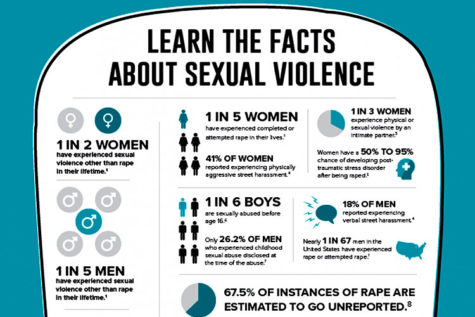Staying Sustainable – How to: Reduce paper use across campus
November 14, 2017
Everyone has heard the motto “Reduce, Reuse, Recycle,” and many try to live up to it. Individuals often focus on recycling, while reducing and reusing are actually more imperative.
Recycling is vital, but it still takes energy to reform products. The new products are usually “down-cycled” or turned into products that are of a lower quality.
The first step should be to reduce consumption and use of paper products.
If a significant number of Mercyhurst students started reducing their paper usage, the university could purchase less paper, thereby reducing its impact on forests.
For every 8,000 sheets of paper not made, one tree is left standing. This paper conservation slows deforestation, increases habitats for wildlife and increases the Earth’s natural ability to remove carbon dioxide from the atmosphere.
In addition to decreasing the number of trees used, reducing paper cuts back on water use, bleach pollution, energy use for paper production and a surprisingly large amount of landfill space. It also ultimately reduces the cost to both students and the university.
There are many easy actions that can be taken to reduce paper usage. The most effective way is to not print something unless you actually have to. Ask professors for permission to email assignments or submit them on Blackboard, rather than handing in a hard copy.
For rewriting notes, type them on the computer instead of copying them over onto another sheet of paper.
Instead of printing out PowerPoints to bring to class, read through the slides beforehand, take notes on your computer in lecture or reference PowerPoints from Blackboard later when studying.
For readings, try downloading a reader and editor on your computer or tablet that allows you to highlight from the computer without needing to print it out.
When you do have to print things, make sure to remember to print double-sided. It doesn’t reduce the cost of printing, but it will halve the amount of paper used with minimal effort.
When it is necessary to use paper, the second important step is to reuse it, which simultaneously reduces paper usage.
Reuse the blank backs as scrap paper for working problems, drafting notes or writing grocery lists before throwing them into the recycling bin.
Finally, the third step in the process is to recycle it. This last step should only be taken when you have used the paper as much as you can. Be sure to recycle it. The only time paper cannot be recycled is when it has food residue on it.
In addition to cutting back on printing, you can reduce your paper impact by using reusable dishes instead of disposable ones, drying your hands using an electric dryer, and using rags or old T-shirts instead of paper towels to clean. These actually work better and can be washed and reused. Another big thing you can do that will also save you money is buying used books or renting books rather than buying new ones.
Whether it’s getting used textbooks, taking notes on your computer or printing double-sided, all of these things ultimately work to reduce the amount of paper waste produced, reducing your environmental footprint and shifting toward a greener lifestyle.







